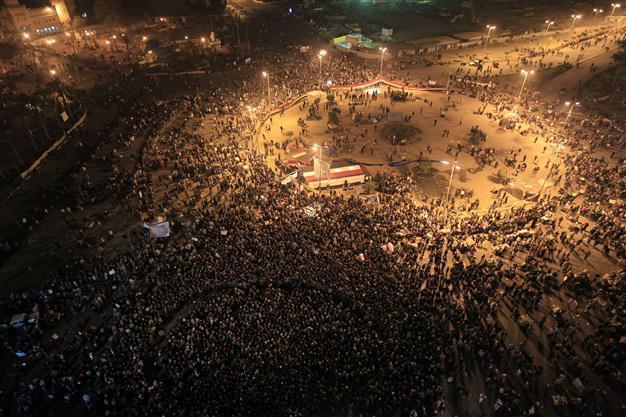Sectarian row looms large in Middle East
ASLI SÖZBİLİR

AFP photo
As we prepare to ring in 2012, the picture looks bleak in Iraq and Syria, where the possibility of sectarian warfare is high, and foreign powers are moving into position to back different factions.A new wave of sectarian violence between Shiites and Sunnis erupted almost the moment U.S. troops left Iraq, raising the prospect of civil war and the eventual disintegration of the country. Geographically, Iraq is in danger of splitting into different sectarian and ethnic fiefdoms, with the Kurds enjoying autonomy in the north, the Shiites dominating the south and entrenched in Baghdad, and the Sunnis toying with the idea of setting up their own autonomous region in the center and west.
Immediately after U.S. forces left Iraq, Shiite Prime Minister Nouri al-Maliki issued an arrest warrant for Tariq al-Hashemi, the Sunni vice president. Al-Hashemi has fled to the north, noting the threats from Baghdad against the autonomous government there. A string of bomb attacks that killed more than 60 people last week took place against this backdrop of sectarian gridlock.
The possibility of a civil war and a sectarian bloodbath is increasing in Syria as well. The armed resistance is fast crowding out civilian protests in the Sunni hubs of the country. According to U.N. estimates, more than 5,000 people have been killed in the crackdown since mid-March.
While the majority of the Syrian population is composed of Sunni Muslims – around 74 percent – the minority Alawites, comprising 10-13 percent of the population, continue to support the Bashar al-Assad regime. The regime and its security forces draw key personnel from the Alawite minority. Now, many fear that Syria is sliding toward a sectarian war that would pit the Sunni Muslim majority, the driving force of the protest movement, against minorities that have mostly stayed loyal to the government, particularly the Alawite sect to which al-Assad belongs.
Finally, Shiite-Sunni tensions are on the rise in Bahrain. Contrary to the situation in Syria, Shiites are the majority in Bahrain, accounting for more than 70 percent of the population, but are ruled by a Sunni royal family. The eruption of unrest in the country was a shock for the closely integrated and intermarried Sunni Gulf Arab monarchs who operate more or less as a club.
The Bahraini demonstrations led by the Shiite majority started as a campaign for a more democratic and representative constitutional monarchy, but the ruling Sunni al-Khalifa family and their Gulf allies claim that it was a “plot” by Iran-backed Bahrainis to establish a Shiite Islamist regime. The Gulf Arab monarchies fear that the disturbances could spread into Saudi Arabia’s Shiite eastern province that neighbors Bahrain. This area is also the home of most of the desert kingdom’s oil reserves. Thus, it was no coincidence that Saudis sent in tanks and troops to suppress the Bahraini unrest.
The special commission appointed to investigate the crackdown stated that 35 people were killed in the unrest, including five security personnel, and five detainees who were tortured to death while in custody. There were also hundreds of injuries. Although the rulers of Bahrain started a reform process to avoid further protests, the sectarian tension in the country continues unabated.
















